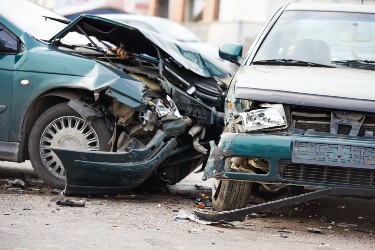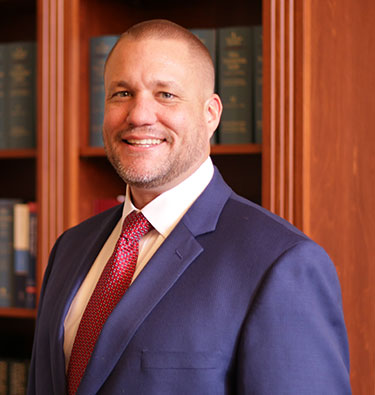
Car accidents happen in the blink of an eye. They leave chaos in their wake and they happen alarmingly often. In fact, from the beginning of 2021 to mid-2022, the Lima Police Department recorded reports of 1,610 car crashes in Allen County.
If you or someone you know was seriously injured in a crash, you may be wondering, Who is liable in a car accident, and how to receive legal compensation? The answer to that question depends on many factors.
Liability in Ohio car accidents hinges mainly on how the accident occurred and the evidence available to support either party’s claims about the collision. You should not be held liable for injuries and associated expenses incurred because of someone else’s actions.
An attorney can help you determine who should be held responsible when you are a crash victim. At Bensinger Law, our Ohio car accident attorneys can help you determine who was at fault for a car accident, and we can help you recover maximum damages in court or at the settlement table.
Call (419) 455-1410 or reach us online today for a free consultation.
How to Determine Liability in a Car Accident
When determining liability in a car accident, the first question you should ask is, Who acted unreasonably leading up to the accident? The second question–Did the unreasonable actions cause you harm?
If someone acted unreasonably in a car crash and was the direct cause of harm to you, they are generally liable to pay for your damages. This unreasonable action or inaction is usually considered to be negligence under the law. For someone to be liable for a personal injury claim, four specific elements must be satisfied. Your Ohio personal injury attorney will be able to walk through these elements to determine if you have a valid personal injury claim and the best legal strategy for your unique situation.
Duty
The first element is establishing that the defendant owes the injured party a legal duty of care. Generally, we have a duty to act as a reasonable person would in order to protect others from harm. In the case of a vehicle accident, all drivers owe everyone on the road a duty to drive reasonably and according to the law.
Breach
Next, you must show a breach of duty by demonstrating that the defendant violated their duty of care. For example, if a car crashes into you while driving at an excessive speed, the driver of that car has breached the duty to drive in a safe and reasonable manner.
Causation
Third, you must show that the breach was the cause of your injuries. Proving causation can be one of the more difficult components of negligence. The negligent driver may argue that the injury or damage was pre-existing or that the cause was entirely different and unrelated to their behavior.
Damages or Harm
Finally, actual damages or harm must be present to succeed in a negligence claim. Hurt feelings may not be considered actual damage, but a broken bone certainly would be. Establishing the amount of damages sustained is an important step in receiving the compensation you deserve.
Who Determines Liability in Ohio Car Accidents?
Generally, two entities determine liability in Ohio car accidents: insurance companies and courts. In many cases, the other driver’s insurance company makes its liability determination first. However, that does not automatically mean their determination is correct.
If the other driver’s insurance company doesn’t believe their driver is liable, or if they don’t offer you a just settlement, you can take your case to court. Because the insurance company is usually the first entity to make a decision about liability, let’s discuss how they determine who is at fault in a car accident.
How Do Insurance Companies Determine Fault?
Once you make a claim on another driver’s insurance company, that company has its adjuster reach out to you for more information.
The adjuster will likely request:
- Police reports from the accident,
- Medical records,
- Pictures,
- Receipts for out-of-pocket expenses,
- Car repair or replacement estimates,
- Contact information for witnesses, and
- A personal statement.
Each piece of information can give you and the other side a good idea of who was responsible for the accident. This information also gives the insurance adjuster a good idea of their likelihood of winning in a trial and how much money they might have to pay if they lose.
Your personal injury attorney will likely conduct an independent investigation to gather evidence for your case. This can include many of the above items as well as any other relevant facts to benefit your claim.
Police Reports Are Important
Immediately reporting your accident to the police is crucial because police reports contain some of the most reliable accounts of what happened. A police report often diagrams how the accident occurred.
If the report cites the other driver for a traffic violation or criminal activity, you have a greater chance of proving the other driver’s fault. You can also gather important witness information from a police report.
Thorough Medical Records
A medical professional will be able to determine the extent of your injuries and often their cause. The sooner you can seek medical attention, the better. This helps avoid any confusion about when and why the injuries occurred. Medical records are also essential to document the pain you have experienced and the costs associated with care. You should not have to bear the financial burden of medical expenses for injuries caused by someone else’s negligent behavior.
Tips for Witness Statements
In the moment, it may be difficult to ascertain who saw what, especially if you are dealing with an injury. Some witnesses may also be hesitant to provide their phone numbers. If you can get their email address, emailing them within a day or two and requesting that they write out what they saw is often less threatening.
If it turns out that a witness is needed, you can follow up. This also provides you with a clear record they can use to jog their memory later. Witnesses can be an important part of determining liability in Ohio car accidents.
Be Careful with Personal Statements
An insurance adjuster will likely ask you for a personal statement about what happened during the accident. Sometimes a personal statement can make or break your case.
It’s important to speak to an experienced car accident attorney immediately so they can prepare you for how to handle personal statements to the insurance company.
Questions an Insurance Company Might Ask
Depending on the severity and circumstances surrounding your accident, it may be in your best interest not to talk to the insurance company without legal representation. Insurance companies determine liability in Ohio car accidents by asking probing questions, which may also be structured to have you admit responsibility for the accident.
Some questions an insurance company might ask to decide if their driver is liable include:
- Was either driver drinking or using prior? If the other driver was impaired, they’re likely more at fault.
- In what condition was each car prior to crashing? Depending on the nature of the accident, a poorly maintained car could place the blame on its driver.
- Who suffered more damage? A victim suffering more damage might be perceived as less culpable.
- Did anyone violate traffic laws? Those who violate traffic laws (for example, speeding, reckless driving, running traffic lights, etc.) might be more at fault for an accident.
- What was the weather and the condition of the road? Surrounding conditions help insurance companies gauge how reasonable each driver was in light of the circumstances.
While an insurance company’s answers to these questions can help you prepare your case, you can’t always trust the insurance company’s assessments.
Hire a skilled attorney to make their own assessments about the strength and value of your case. Insurance companies often downplay the facts in your case to protect their bottom line, while your attorney focuses on how to present your case in the most favorable light.
What If I Was Partially at Fault for the Accident?
There may be a situation where your actions contributed to the accident or your injuries. For example, the negligent driver may have run a red light, but you were speeding when the accident occurred. In most cases, you can still recover damages.
According to the Ohio doctrine of comparative negligence, you cannot recover any money from other parties in a crash if you were more than 50% responsible for the accident. If you were 50% responsible or less, you can recover a percentage of your damages. That means if you were awarded $100,000 in damages but found to be 20% liable for the accident, you would receive $80,000.
What if I Suffered Injuries in a Car Accident That Wasn’t My Fault?
If you were involved in an automobile accident and went to the hospital for injuries, you should keep a journal or log to document what happened.
Human memory tends to fade over time, and by the time it gets to the point where information about your injuries is needed, it may be years since the time of the accident. This is why it is important to keep a journal or notebook documenting each and every day from the time of the accident until you are healthy again.
A journal is helpful because it can help you remember how you were feeling that day, if you were in pain, or couldn’t sleep as a result of the accident.
What Should I Document in This Journal?
There is not a comprehensive, exclusive list. The best way to look at a personal injury journal/notebook is like a diary. You want to write details down that relate to your accident.
For example, if you were in a car collision, the next few weeks you keep waking up with neck stiffness or back pain, you would want to write that down. The reason is 3/4 months down the road or even years, you might not remember that you couldn’t sleep on x day because of pain that resulted from the accident.
A journal serves more as a memory booster because you can reference back to the days after the accident while you were being treated. It also helps because the other side cannot discredit some of your injuries because you have it documented.
Speak to an Attorney Today
Aaron Bensinger is an experienced attorney who gives top-quality, personalized representation to victims of car accidents in northwest Ohio. Bensinger Legal Services knows that the best result in a personal injury case is the result that specifically suits you, so we tailor our advocacy to your unique needs. We understand how to determine liability in Ohio car accidents and fight for fair settlements and verdicts.
You can call (419) 455-1410 or contact us online for a free case review. We have the experience and give you the personal attention you need.


